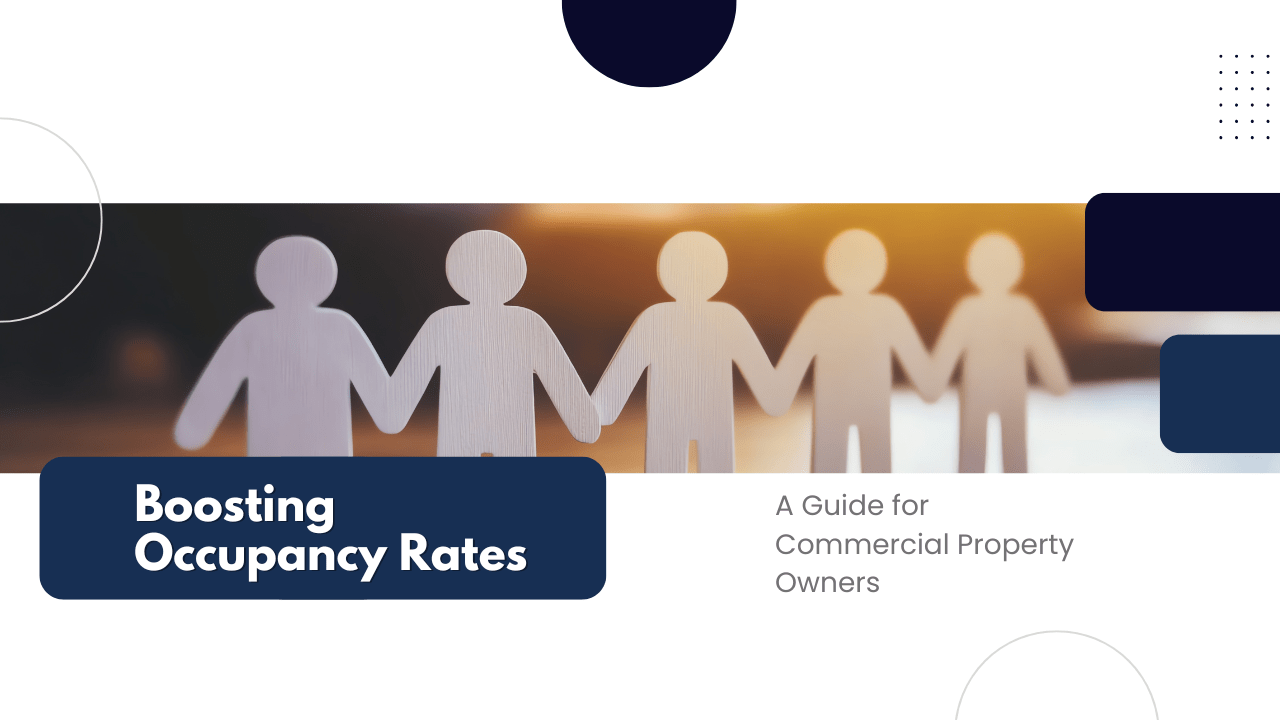With economic fluctuations, shifts in work patterns, and a competitive market, keeping a California commercial property fully leased has never been more important. Or more challenging.
Occupancy has a direct impact on profitability. Whether we’re talking about office space, retail space, or industrial and warehouse properties, maximizing occupancy demands an understanding of commercial tenants in the current market, a willingness to provide value, and a focus on tenant satisfaction.
At Bell Properties Commercial Real Estate, we’ve been helping commercial property owners keep their buildings and properties occupied for years. We have a strategic, market-savvy approach that not only boosts occupancy rates but improves property value.
From optimizing properties with a diverse tenant mix to investing in modern marketing tactics, here’s what California commercial real estate owners need to know to ensure they don’t lose money on long and unnecessary vacancies.
Understanding Local Market Dynamics
California is a large state, and the strategies used in Los Angeles may be different from those used in Palm Springs or Sacramento. This is why knowing the local market is so important. Before taking any action, smart investors will analyze the specific submarket in which they’re doing business. This state is a collection of vastly different micro-economies.
Conduct market research by analyzing current vacancy rates, rent trends, and demand drivers for specific asset types in your specific locales. Take a look at the competition, too. Understanding what other properties have to offer can inform how an investor decides on their own amenities, pricing, and lease flexibility.
It’s also important to stay updated on all zoning regulations that impact a commercial property.
Not sure what exactly is happening in the local market? Ask us for our evaluation at Bell Properties Commercial Real Estate.
Make Strategic Upgrades to Commercial Rental Properties

Commercial tenants are especially focused on tech-forward features, sustainability features and materials, and convenience. They want more than just square footage. If a property looks tired or lacks modern functionality, it could be the reason that potential lessees are avoiding it and existing tenants are not renewing lease agreements.
Some of the improvements we’d recommend as professional property managers in California’s commercial real estate market are:
Curb appeal and common areas. Improve landscaping, lobbies, and signage. A welcoming exterior is critical for retail and office properties. Make sure there’s plenty of parking and easy access to the building for a tenant’s employees and customers.
Smart technology integration. Access to strong technology is going to make a commercial property especially appealing. Add keyless entry, smart thermostats, and high-speed internet infrastructure.
Green upgrades. Solar panels, EV charging stations, and LEED certifications attract tenants seeking energy-efficient, ESG-compliant spaces. This is becoming more of a priority in markets all across California.
Remember that not every upgrade is worth the cost. Focus on those that align with tenant expectations and offer measurable return through higher rents or faster lease-ups.
Rethink Your Tenant Mix
There has been a growing interest in mixed-use properties. As a commercial real estate investor, it’s important to diversify a tenant base, even within a single property. This is especially vital for retail and mixed-use properties. A well-balanced tenant mix not only increases foot traffic and revenue potential but also reduces risk by diversifying income sources.
Look at ways to diversify tenant categories. Avoid heavy reliance on one single industry. Smart investors over the last five years have been able to pivot from office space to co-working spaces, for example. Be adaptable and make properties attractive to tenants in many different industries. Mix essential services, experience-based retail, and local or national brands.
Some of our ideas?
Incorporate those co-working or flexible spaces. This is especially relevant for office landlords who may be struggling to keep their office space occupied. Hybrid and remote work is here to stay.
Allow for flexibility. Offering short-term, and even month-to-month lease options are not always ideal, but they can help fill gaps.
Local partnerships. Collaborate with local businesses or startups. California has a well-known entrepreneurial ecosystem; supporting local tenants can attract community engagement.
Target growth sectors when attracting tenants and deciding on investments. Some commercial sectors are booming even as others shrink. Tailor a leasing strategy that matches demand. Right now, we’re seeing a lot of growth in life sciences and biotech. Logistics and warehousing are industries driven by e-commerce.
Offer Flexible Lease Structures to Increase Occupancy
 In uncertain times, rigid lease terms can scare off potential commercial tenants. Flexibility can be a major competitive edge. And while traditional thinking says the longer the lease term, the lower the vacancy risk, it’s important to meet the demand of a shifting and modern tenant base. Not every commercial tenant is going to need space for ten years. Seasonal operators might prefer a lease term that’s just a few months.
In uncertain times, rigid lease terms can scare off potential commercial tenants. Flexibility can be a major competitive edge. And while traditional thinking says the longer the lease term, the lower the vacancy risk, it’s important to meet the demand of a shifting and modern tenant base. Not every commercial tenant is going to need space for ten years. Seasonal operators might prefer a lease term that’s just a few months.
Consider offering a shorter initial lease with several different renewal options. This might come with a graduated rent structure, allowing the owner to increase what’s being earned as the tenant stays longer.
Some small businesses and startups have been interested in sharing space lately. Look for ways to offer such a thing.
Providing build-out allowances so tenants can customize the space they’re renting has always been an excellent way to attract and retain good tenants.
If you’re wondering what kind of flexibility will work especially well for your specific space, contact us at Bell Properties Commercial Real Estate. We’re sure to have some ideas.
Leverage Tech-Driven Marketing
Commercial properties that are marketed well rarely remain vacant for too long. Digital marketing and responsive tenant outreach can lead to better occupancy rates.
Must-have marketing tactics that we’re always using include:
3D virtual tours and drone footage
SEO-optimized property websites
Active social media marketing on platforms like LinkedIn and Instagram (especially for retail and office)
Data-driven advertising using geo-targeting and retargeting
Don’t underestimate the power of quality photography and branding. A cohesive identity, from signage to an online presence can elevate the perceived value of a property.
Brokers still play a major role in lease-up activity for commercial owners. Make your property worth their time. Competitive commissions or bonuses can help keep potential tenants coming to see a property. Accurate listings should look professional and be attention-grabbing. Open houses can help attract a wider pool of tenants.
Referral programs for current tenants or local business groups can also yield leads.
And don’t forget the importance of property management partnerships, especially when it comes to leasing and marketing.
Optimize Property Management and Tenant Experience

Attracting tenants for a commercial space is a lot of work. Retaining those tenants is just as important and can be even more time consuming.
And this is where responsive property management is so helpful. Smart investors will partner with a management team to ensure tenants are satisfied. We can provide quick issue resolution and clear communication, which boosts tenant satisfaction.
Part of a good tenant experience is the opportunity to create community. Owners who have multiple tenants in a single building can introduce community-building events such as networking socials, pop-up markets, and meet-and-greets. Hosting a food truck every Friday can build loyalty and appreciation.
Part of property management is property maintenance. Tenants want clean, well-maintained spaces with visible hygiene protocols. Those hand sanitizers on walls outside of elevators are a great example of this. Contract with a great cleaning crew and keep the landscaping on point.
When thinking about a retention strategy, offer incentives for early renewals or referrals. A rent discount or upgrade can be more cost-effective than a long vacancy.
Adjust Pricing Strategically
Every commercial property owner wants to maximize their earnings. That doesn’t always mean setting the highest possible price. Sometimes, a more nuanced strategy is required. Overpricing in a tenant’s market will prolong vacancies. Underpricing can leave money on the table. Smart pricing means finding the right balance.
Don’t be afraid to negotiate, especially if a tenant offers long-term value.
Considering a change in direction could boost occupancy and limit vacancy. If an asset consistently underperforms, it might be time for a more significant pivot. Office-to-residential conversions are gaining traction, especially in urban cores. Rebranding the property can have an effect on attracting tenants, too. Consider a new name, updated signage, and different branding to help reset market perceptions.
And remember how popular those mixed-use spaces are becoming. Combine retail, office, and residential to broaden appeal and increase revenue streams.
Strategies such as these require capital and planning. However, repositioning can deliver long-term gains. Especially if nothing else seems to be working.
In California’s commercial real estate environment, boosting occupancy rates requires more than reactive leasing. It can only be achieved with a proactive, multifaceted strategy that blends market intelligence, thoughtful upgrades, tenant-focused services, and creative marketing.
 Successful property owners treat occupancy like a performance metric they can control, not a passive result of market conditions. By staying flexible, informed, and tenant-oriented, it’s much easier to keep spaces full and investments strong.
Successful property owners treat occupancy like a performance metric they can control, not a passive result of market conditions. By staying flexible, informed, and tenant-oriented, it’s much easier to keep spaces full and investments strong.
Let’s talk about how to increase occupancy rates at your properties. Contact us at Bell Properties Commercial Real Estate.



